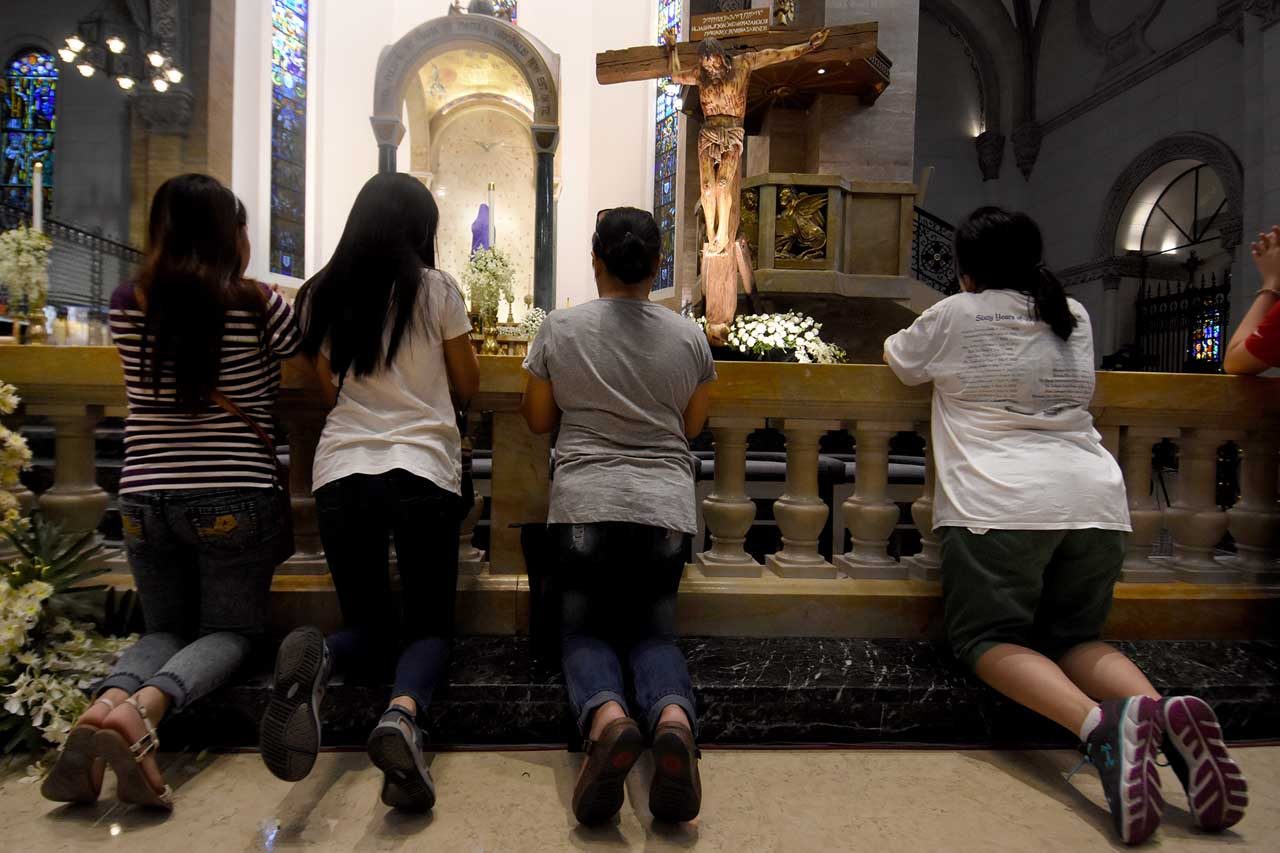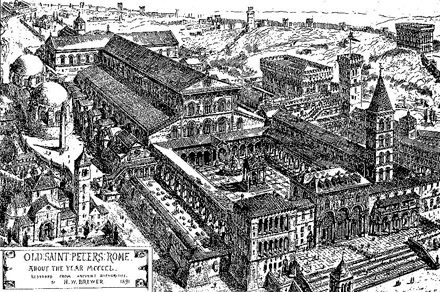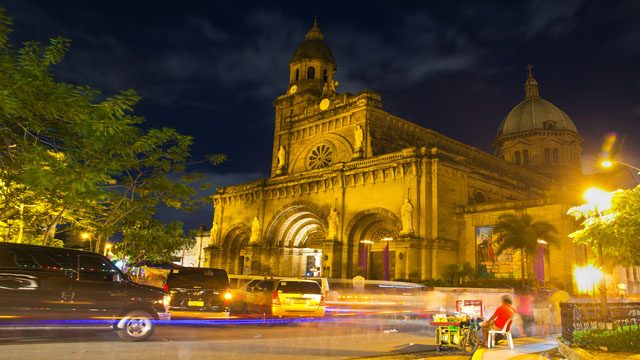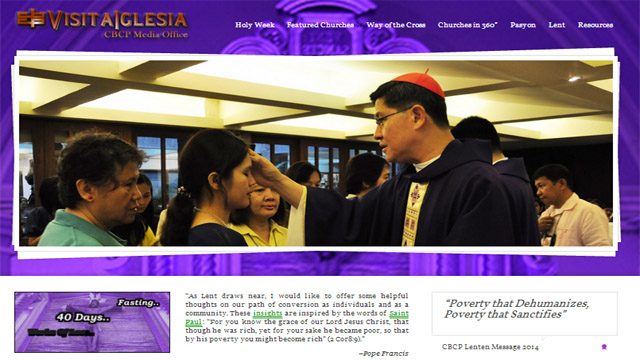SUMMARY
This is AI generated summarization, which may have errors. For context, always refer to the full article.

Editor’s Note: This piece was originally published in April 2014. Rappler is updating and republishing this to mark Holy Week 2018.
MANILA, Philippines (UPDATED) – The Visita Iglesia (Church Visit) is a Holy Week practice where devotees visit and pray in at least 7 separate churches.
It can be done in one day, usually on Maundy Thursday, or it can take days until before Easter Sunday if churches are far apart.
Initially, the purpose of this Holy Week practice was to honor the Blessed Sacrament.
It then morphed into a form of pilgrimage and meditation for the Holy Week, and also a form of seeking penance for sins. Superstition even has it that wishes would be granted upon completion of a Visita Iglesia.
Stations of the Cross may also be held during church visits. Devotees either visit 14 churches for each of the 14 Stations of the Cross, or pray two stations in each of the 7 churches.
Origins
There are several theories on the origins of the church visit practice. Among them is of early Christian communities of the Roman Empire commemorating the suffering and death of Jesus in 7 parts.
When Christianity became the official religion of the Roman Empire under Emperor Theodosius I, the practice evolved to its current form of visiting 7 churches.
There were 7 major basilicas founded in Rome which were believed to hold the tombs of prominent martyrs like St. Peter and St. Paul. A pilgrimage to all 7 basilicas then developed among the faithful.

The practice then spread to other parts and cities of the Roman Empire, and became associated with the Holy Week when they were made to honor the Blessed Sacrament.
Following the fall of the Roman Empire, the practice slackened somewhat until during the first Jubilee of the Catholic Church, when the church visitations were revived by Pope Boniface VIII.
Spread to the Philippines
Like all things Catholic, Visita Iglesia came to the islands via Spanish colonizers, particularly through Augustinian missionaries in the 1560s.
Doing the Visita Iglesia was initially difficult during the early Spanish Period. There were only a few churches back then, and great distances separated settlements from each other.
This problem persisted even into recent history. For example, in some poor and remote rural communities in the country, one way to hold Visita Iglesia without going to the city is by entering, praying, and re-entering the local church at least 7 times.

Eventually, settlements grew larger, and improved transportation systems throughout the centuries made Visita Iglesia possible. Manila became the center of Visita Iglesia pilgrimage in the islands due to the 7 large baroque churches in Intramuros alone.
Sadly, 5 of the 7 baroque churches were totally destroyed in the Battle of Manila during World War II and were never rebuilt. Only San Agustin and the Manila Cathedral are left to receive church visits.
Nowadays, the Visita Iglesia has expanded beyond being a purely religious practice, as tourists often travel alongside the faithful to visit old colonial churches and cathedrals across the country.
The practice also underwent a 21st-century makeover in the Philippines with the launch of Catholic Bishops’ Conference of the Philippines’ visitaiglesia.net and other Visita Iglesia websites, which allow users, particularly overseas Filipinos and the infirm, to undergo virtual church visits at home.

Virtual tour of 14 Philippine churches
Rappler’s own Virtual Visita Iglesia offers a tour of 14 Philippine churches through a 360-degree YouTube video.
(To navigate on mobile and see each church in 360-degree view, scroll up and down or swipe left and right on the screen, while listening to and praying the Stations of the Cross.)
The CBCP says devotees should not use online Visita Iglesia sites as substitutes for the actual practice. The bishops encourage able devotees to go through the actual Visita Iglesia. – Rappler.com
Source: Holy Thursday: CatholicCulture.org, Visita Iglesia.net, Rev.Fr.Louie Coronel, OP: Visita Iglesia: History, Tradition and Significance, Fr. Naji Kiwan: Holy Week in The Maronite Church, UNESCO on Manila Cathedrals, Diocese of Pittsburg on 7 Church Visits, World Heritage Sites Damaged By World War II, Filway’s Philippine Almanac 1995, CBCP Launches Visita Iglesia Online: Philippine Information Agency
Add a comment
How does this make you feel?
There are no comments yet. Add your comment to start the conversation.